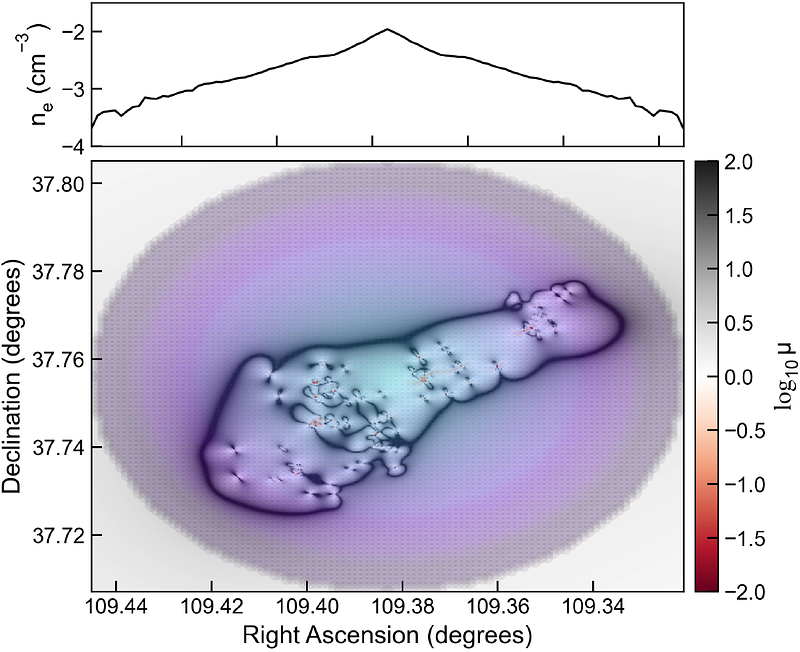Forecasting the FRB Population Observed Through Galaxy Cluster Lenses

Forecasting the FRB Population Observed Through Galaxy Cluster Lenses
Mawson W Sammons, Evan Davies-Velie, Matt Dobbs, Zarif Kader, Seth R. Siegel, Jonathan Sievers
AbstractHigh redshift Fast Radio Bursts (FRBs) are expected to be extremely powerful probes of our Universe. However, while a significant number of FRBs are expected to exist at high redshift, detecting them has been difficult, with only a handful robustly confirmed at redshifts greater than one. In many other fields, gravitational lensing from galaxy clusters has enabled high redshift detections by magnifying background sources. In this work we forecast the populations of FRBs expected to be detected by CHIME and upcoming instrument CHORD, for blank fields and by lensing through a range of strong lensing galaxy clusters, based on existing, observationally driven cluster models. We find that the presence of a galaxy cluster of mass $M\geq5\times10^{14} M_\odot$ within the detection beam of a transit telescope will approximately double the rate of detected high redshift ($z\geq1$ CHIME, $z\geq2$ CHORD) FRBs for that beam. Consequently, we find that knowledge of cluster positions can be used by instruments like CHIME or CHORD in tandem with novel observational strategies to isolate a sample of high redshift FRBs with $\gtrsim50\%$ purity at rate of $\lesssim3$ per year. This would provide a statistically high redshift sample of mostly gravitationally lensed FRBs, that would be ideal candidates for optical follow-up, constraining the FRB-star formation relation and for use in cosmological studies including measuring $H_0$, characterising dark matter substructures and probing reionization.